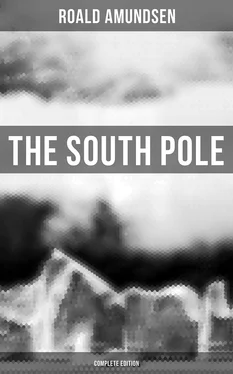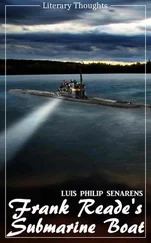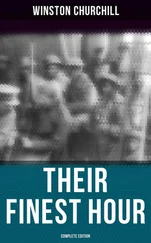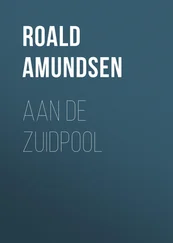I intended to try to get people with me who were specially fitted for outdoor work in the cold. Even more necessary was it to find men who were experienced dog-drivers; I saw what a decisive bearing this would have on the result. There are advantages and disadvantages in having experienced people with one on an expedition like this. The advantages are obvious. If a variety of experiences are brought together and used with common sense, of course a great deal can be achieved. The experience of one man will often come in opportunely where that of another falls short. The experiences of several will supplement each other, and form something like a perfect whole; this is what I hoped to obtain. But there is no rose without a thorn; if it has its advantages, it also has its drawbacks. The drawback to which one is liable in this case is that someone or other may think he possesses so much experience that every opinion but his own is worthless. It is, of course, regrettable when experience takes this turn, but with patience and common sense it can be broken of it. In any case, the advantages are so great and predominant that I had determined to have experienced men to the greatest extent possible. It was my plan to devote the entire winter to working at our outfit, and to get it as near to perfection as possible. Another thing to which we should have to give some time was the killing of a sufficient number of seals to provide fresh meat both for ourselves and our dogs for the whole time. Scurvy, the worst enemy of Polar expeditions, must be kept off at all costs, and to achieve this it was my intention to use fresh meat every day. It proved easy to carry out this rule, since everyone, without exception, preferred seal meat to tinned foods. And when spring came I hoped that my companions and I would be ready, fit and well, with an outfit complete in every way.
The plan was to leave the station as early in the spring as possible. If we had set out to capture this record, we must at any cost get there first. Everything must be staked upon this. From the very moment when I had formed the plan, I had made up my mind that our course from the Bay of Whales must be set due south, and follow the same meridian, if possible, right up to the Pole. The effect of this would be that we should traverse an entirely new region, and gain other results besides beating the record.
I was greatly astonished to hear, on my return from the South, that some people had actually believed we had set our course from the Bay of Whales for Beardmore Glacier — Shackleton’s route — and followed it to the south. Let me hasten to assure them that this idea never for a single instant crossed my mind when I made the plan. Scott had announced that he was going to take Shackleton’s route, and that decided the matter. During our long stay at Framheim not one of us ever hinted at the possibility of such a course. Without discussion Scott’s route was declared out of bounds.
No; due south was our way, and the country would have to be difficult indeed to stop our getting on to the plateau. Our plan was to go south, and not to leave the meridian unless we were forced to do so by insuperable difficulties. I foresaw, of course, that there would be some who would attack me and accuse me of “shabby rivalry,” etc., and they would perhaps have had some shadow of justification if we had really thought of taking Captain Scott’s route. But it never occurred to us for a moment. Our starting-point lay 350 geographical miles from Scott’s winter quarters in McMurdo Sound, so there could be no question of encroaching upon his sphere of action. Moreover, Professor Nansen, in his direct and convincing way, has put an end once for all to this twaddle, so that I need not dwell upon it any longer.
I worked out the plan, as here given, at my home on Bundefjord, near Christiania, in September, 1909, and as it was laid, so was it carried out to the last detail. That my estimate of the time it would take was not so very far out is proved by the final sentence of the plan: “Thus we shall be back from the Polar journey on January 25.” It was on January 25, 1912, that we came into Framheim after our successful journey to the Pole.
This was not the only time our calculations proved correct; Captain Nilsen showed himself to be a veritable magician in this way. While I contented myself with reckoning dates, he did not hesitate to go into hours. He calculated that we should reach the Barrier on January 15, 1911; this is a distance of 16,000 geographical miles from Norway. We were at the Barrier on January 14, one day before the time. There was not much wrong with that estimate.
In accordance with the Storthing’s resolution of February 9, 1909, the Fram was lent for the use of the expedition, and a sum of 75,000 kroner (4,132 pounds sterling) was voted for repairs and necessary alterations.
The provisions were chosen with the greatest care, and packed with every precaution. All groceries were soldered in tin boxes, and then enclosed in strong wooden cases. The packing of tinned provisions is of enormous importance to a Polar expedition; it is impossible to give too much attention to this part of the supplies. Any carelessness, any perfunctory packing on the part of the factory, will as a rule lead to scurvy. It is an interesting fact that on the four Norwegian Polar expeditions — the three voyages of the Fram and the Gjöa’s voyage — not a single case of scurvy occurred. This is good evidence of the care with which these expeditions were provisioned.
In this matter we owe a deep debt of gratitude above all to Professor Sophus Torup, who has always been the supervising authority in the matter of provisioning, this time as well as on the former occasions.
Great praise is also due to the factories that supplied our tinned goods. By their excellent and conscientious work they deserved well of the expedition. In this case a part of the supplies was entrusted to a Stavanger factory, which, in addition to the goods supplied to order, with great generosity placed at the disposal of the expedition provisions to the value of 2,000 kroner (£110). The other half of the tinned foods required was ordered from a firm at Moss. The manager of this firm undertook at the same time to prepare the necessary pemmican for men and dogs, and executed this commission in a way that I cannot sufficiently praise. Thanks to this excellent preparation, the health both of men and dogs on the journey to the Pole was always remarkably good. The pemmican we took was essentially different from that which former expeditions had used. Previously the pemmican had contained nothing but the desired mixture of dried meat and lard; ours had, besides these, vegetables and oatmeal, an addition which greatly improves its flavour, and, as far as we could judge, makes it easier to digest.
This kind of pemmican was first produced for the use of the Norwegian Army; it was intended to take the place of the “emergency ration.” The experiment was not concluded at the time the expedition left, but it may be hoped that the result has proved satisfactory. A more stimulating, nourishing, and appetizing food, it would be impossible to find.
But besides the pemmican for ourselves, that for our dogs was equally important, for they are just as liable to be attacked by scurvy as we men. The same care had therefore to be devoted to the preparation of their food. We obtained from Moss two kinds of pemmican, one made with fish and the other with meat. Both kinds contained, besides the dried fish (or meat) and lard, a certain proportion of dried milk and middlings. Both kinds were equally excellent, and the dogs were always in splendid condition. The pemmican was divided into rations of 1 pound 1.5 ounces, and could be served out to the dogs as it was. But before we should be able to use this pemmican we had a five months’ voyage before us, and for this part of the expedition I had to look for a reliable supply of dried fish. This I found through the agent of the expedition at Tromsö, Mr. Fritz Zappfe. Two well-known firms also placed large quantities of the best dried fish at my disposal. With all this excellent fish and some barrels of lard we succeeded in bringing our dogs through in the best of condition.
Читать дальше












